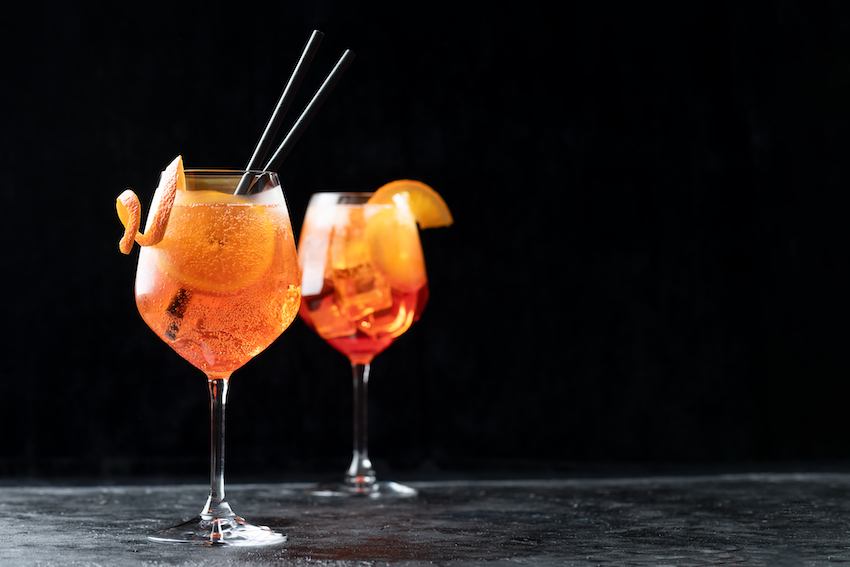Aperol: what it is and how to drink it
How an italian aperitif became a worldwide sensation
Robert Beir

The resurgence of Aperol, an Italian aperitif with roots in the early 20th century, into the global beverage scene is a fascinating tale of tradition, marketing, and the quest for lighter, sociable drinking options. This bright orange spirit, once a regional specialty of the Veneto region in Italy, has become a key ingredient in one of the most popular cocktails across Europe and the Americas: the Aperol Spritz.
The Essence and Consumption of Aperol
Originally produced by the Barbero 1891 company, founded by the Barbieri brothers, Aperol is now under the auspices of the Campari Group, which oversees its production and distribution. With an alcohol content of 11%, Aperol is a blend of high-quality roots and herbs, including gentian, quinine, bitter orange, and rhubarb. This combination gives Aperol its distinctive flavor profile: complex, rich, and versatile. It is this versatility that has catapulted Aperol to become one of the best-selling spirits in Italy and a growing favorite abroad.
Typically enjoyed as an aperitif, Aperol is also the star ingredient in the Aperol Spritz, a cocktail that has gained cult status in countries like Germany and Austria. Its brilliant orange color, complex herbal aromas, and hints of vanilla, alongside a rounded, velvety texture with lasting notes of wood and orange, make it a unique addition to the cocktail world.
The Birth of an Italian Legend
Aperol's journey began at the International Fair of Padua in 1919, created by the Barbieri brothers. The recipe, still a secret to this day, quickly became a favorite among Italians, particularly in the Veneto region. The brand's growth was significantly boosted in the 1960s and 70s through successful advertising campaigns on the then-nascent Italian television.

The famous Italian actor Tino Buazzelli starred in one such memorable ad, coining the catchphrase "Ah, Aperol" after a forehead slap, a gesture and exclamation that became synonymous with ordering the drink across Italian bars.
In 1995, the introduction of Aperol Soda, a lower alcohol content version, expanded the brand's reach, continuing to be popular in Italy, Switzerland, and Austria. The acquisition by the Campari Group in 2003 only served to further propel Aperol's success, particularly with the strategic marketing of the Aperol Spritz cocktail, which has become a staple on the drink's labeling since 2011.
Aperol's Rise to Global Prominence
The Aperol Spritz's ascension to global fame is a story of cultural shifts and marketing acumen. Served in a wine glass filled with ice, the Aperol Spritz combines soda, sparkling wine, and Aperol in precise proportions, garnished with a slice of orange. Its origins trace back to the 1950s, evolving from the 1920s Venetian Spritz, which itself was inspired by the 19th-century Austrian practice of diluting Venetian wine with seltzer.

The term "spritz" originates from the German word "spritzen," meaning "to spray," indicative of the drink's refreshing nature. The cocktail's explosion in popularity over the last decade can be partially attributed to the global financial downturn of 2008, dubbed the "Great Recession." In Italy, the economic squeeze led to a rise in aperitif culture, with bars offering free snacks to patrons purchasing drinks, encouraging the consumption of lower-alcohol beverages like Aperol.
The Campari Group seized this cultural moment to promote the Aperol Spritz as the quintessential aperitif, highlighting its vibrant color and flavor in wine glasses. As the economic crisis waned, the Aperol Spritz's popularity did not, crossing borders to become the go-to aperitif and cocktail choice for many around the world.
Spain, among other countries, has witnessed the Aperol Spritz's rise to prominence, with the cocktail now a common sight in a diverse array of bars and restaurants, a testament to its versatility and appeal as both an aperitif and a drink suitable for any occasion.
Founded in 2007, Vinetur® is a registered trademark of VGSC S.L. with a long history in the wine industry.
VGSC, S.L. with VAT number B70255591 is a spanish company legally registered in the Commercial Register of the city of Santiago de Compostela, with registration number: Bulletin 181, Reference 356049 in Volume 13, Page 107, Section 6, Sheet 45028, Entry 2.
Email: [email protected]
Headquarters and offices located in Vilagarcia de Arousa, Spain.